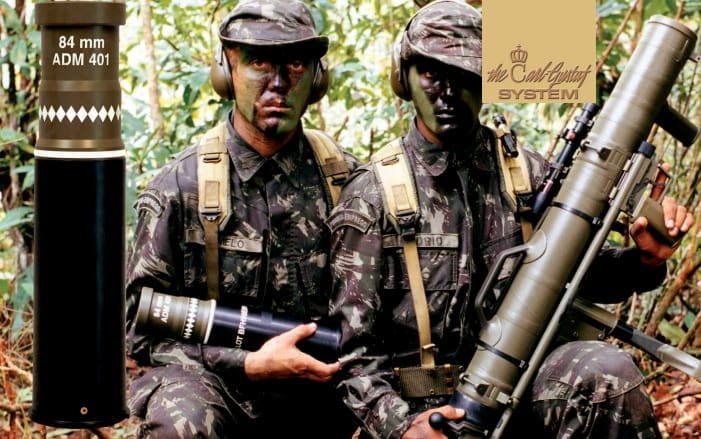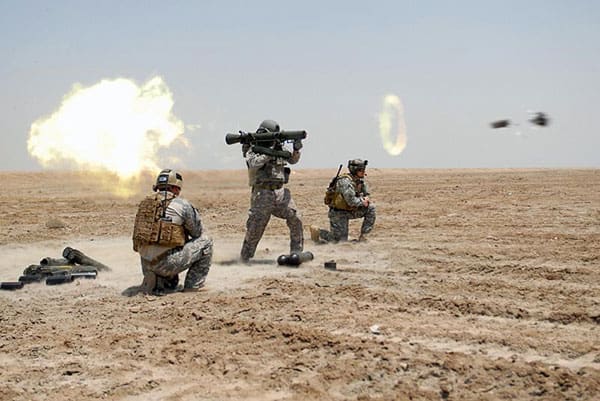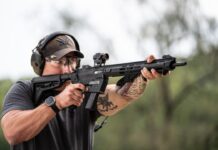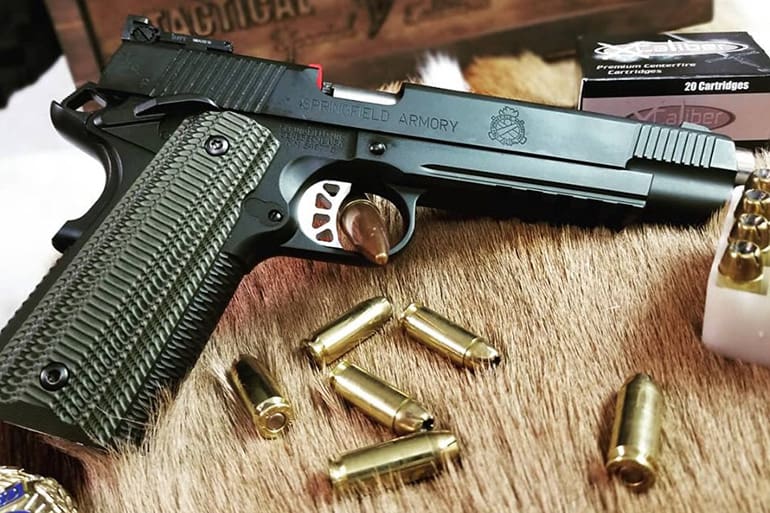“The ADM 401 carries a payload of 1100 flechettes and has an effective range of 100 m,” the good folks at Saab Bofors Dynamics tell us re: ammo for Sweden’s popular and versatile Carl Gustav recoilless rifle. “As there is no explosive charge the flechettes are released by gas pressure in the form of a cone. This results a distributions of 5 to 10 flechettes per square meter at a distance of 100 m, which is extremely effective against enemy intrusion.” Ya think? “An American soldier interviewed about how the round killed 25 Afghans referred to the rounds as ‘the meat grinder’.” And this is a problem because . . .
“I think it’s totally reprehensible that Sweden manufactures and exports these types of weapons,” said Anna Ek, chair of the Svenska Freds- och skiljedomsförening (‘Swedish peace and arbitration society’), to Sveriges Radio (SR).
“It violates the intention of weapon manufacturing laws which say that manufacture only for export is prohibited.”
In other words, Sweden shouldn’t make shit that kills a lot of people, and if it does, it should only make it for themselves. Gotcha.






“An American soldier . . . referred to the rounds as ‘the meat grinder’.” And this is a problem because . . .”
Because Swedes are vegans?
I think we may have a winner in the “What do you use to defend your boat question”
Great idea. I’m thinking this thing would make a lot of Somali pirates think twice once they see some fellow scurvy dogs ventilated by a meatgrinder volley.
And this is a problem because . . .
The Law Of Armed Combat (LOAC).
It’s difficult to explain properly without having a JAG present, but the LOAC is an international agreement to limit unnecessary suffering during conflicts. Here’s an excerpt that I found online (http://milcom.jag.af.mil/ch15/loac.doc):
— Humanity (also referred to as the principle of unnecessary suffering)
— This principle prohibits the employment of any kind or degree of force that is not necessary for the purposes of war, that is, for the partial or complete submission of the enemy with the least possible expenditure of life, time and physical resources
— Relevant Hague Regulations provisions
—- “The right of belligerents to adopt means of injuring the enemy is not unlimited” (Article 22)
—- “In addition to the prohibitions provided by special Conventions, it is especially forbidden
—– To employ poison or poisoned weapons
—– To kill or wound treacherously individuals belonging to the hostile nation or army
—– To employ arms, projectiles, or material calculated to cause unnecessary suffering” (Article 23)
— Examples of lawful weapons
—- Incendiary weapons (but see below) *no below*
—- Fragmentation weapons and cluster bombs (CBUs)
—- Nuclear weapons (but some international treaties forbid placement in certain areas – outer space, ocean seabeds, Antarctica, certain countries or regions)
—- Shotguns (but must have hardened [also called “chilled”] shot) and silencers
—- Landmines (but see below) *no below*
— Examples of unlawful weapons
—- Poisons or poisoned weapons
—- Bullets that expand or flatten easily in the human body (“dum-dum” bullets)
—- Any weapon the primary effect of which is to injure by fragments that, in the human body, escape detection by X-rays
—- Indiscriminate weapons
—– Biological and bacteriological weapons
—– Weapons incapable of being controlled
—– Chemical weapons (but see below) *no below*
— Even lawful weapons may be used unlawfully. Examples: rifles to shoot POWs, strafing civilians, firing on shipwrecked mariners or downed aircrews
So, nukes are OK (by some), but indiscriminate flechettes are probably not OK. Just a guess.
Flechettes aren’t indiscriminate. The flechettes spread into a beaten zone, strangely, not all that different in effect from a machine gun. Svenska Freds- och skiljedomsförening, on the other hand, I suspect IS indiscriminate as in Western Civ = Bad, Not Western Civ = Good, ja? I wonder what their take is on Palestinian rat poison soaked nail bombs? Anyone? Beuller?
First, “The Law of Armed Combat” should be used as toilet paper. It is kill or be killed on the battlefield. I do not think anyone hit by these Flechettes would ever know what hit them.
These are also available in shotgun shell form here in the states…just saying!
The LOAC is chocked full of contradictions, so I’m not a big fan of it either. My point though about the “meat grinder” flechettes is that they do not necessarily kill the person that they’re shot at. They may rip the person apart, but it’s not a humane kill (I know, who cares, right?)
There are several things civilians can obtain and use, but our troops can’t like hollow point bullets, which is ridiculous.
I didn’t realize they were available for shotguns. I have to get some round to try out.
The US Army occasionally used field artillery loaded with flechette rounds in a direct-fire role against attacking infantry. The 105mm flechette round was known as a ‘Beehive’ round because of the deafening buzzing/humming sound of the 8,500 steel flechettes in flight. In one firefight at LZ Bird, for example, a single 105mm Beehive shell obliterated an entire wave of NVA infantry.
Their main drawback was their very short range by artillery standards, only a few hundred yards. The flechettes shed their velocity very quickly once they start to disperse.
I don’t have a problem with the Carl Gustav recoilless rifle being used as a giant shotgun, as long as the targets are combatants.
I only saw a training demo of the artillery “beehive.” My bias was that an ordinary HE shell would do much more damage. Maybe for close in we’re-being-over-run direct fire an HE would be too powerful.
This Swedish device may be as effective as the old beehive artillery shell and much easier to deploy.
You cant make swedish meatballs without a swedish meat grinder… just sayin…
Nice job, Travis! Ralph…your serve.
Yes you can, Travis. Just use a shotgun and aim low.
Comments are closed.